A few weeks ago, I discovered – through Russian Census and Ellis Island material sent to me by Leon Kull – that my grandfather’s family probably came from Borisov uyezd (county) in what is now Belarus. Ever since then, I’ve felt an unsettling transition underway inside me.
For years, the only place in Russia that I knew my grandfather had lived was Ryazan. Several months ago, I started writing a blog thread about the world of Jews in Ryazan. My interest was not only my own grandfather, but also other people he might have known or been close to. Ryazan was outside the Pale of Settlement, to which most Jewish citizens of the Russian Empire were confined by law beginning under Catherine the Great. To live outside the Pale, Jews had to obtain official permits given only to people in certain professions and a very few other cases. So I began by looking at a tiny group of Jewish residents of this rather unlikely spot in central Russia.
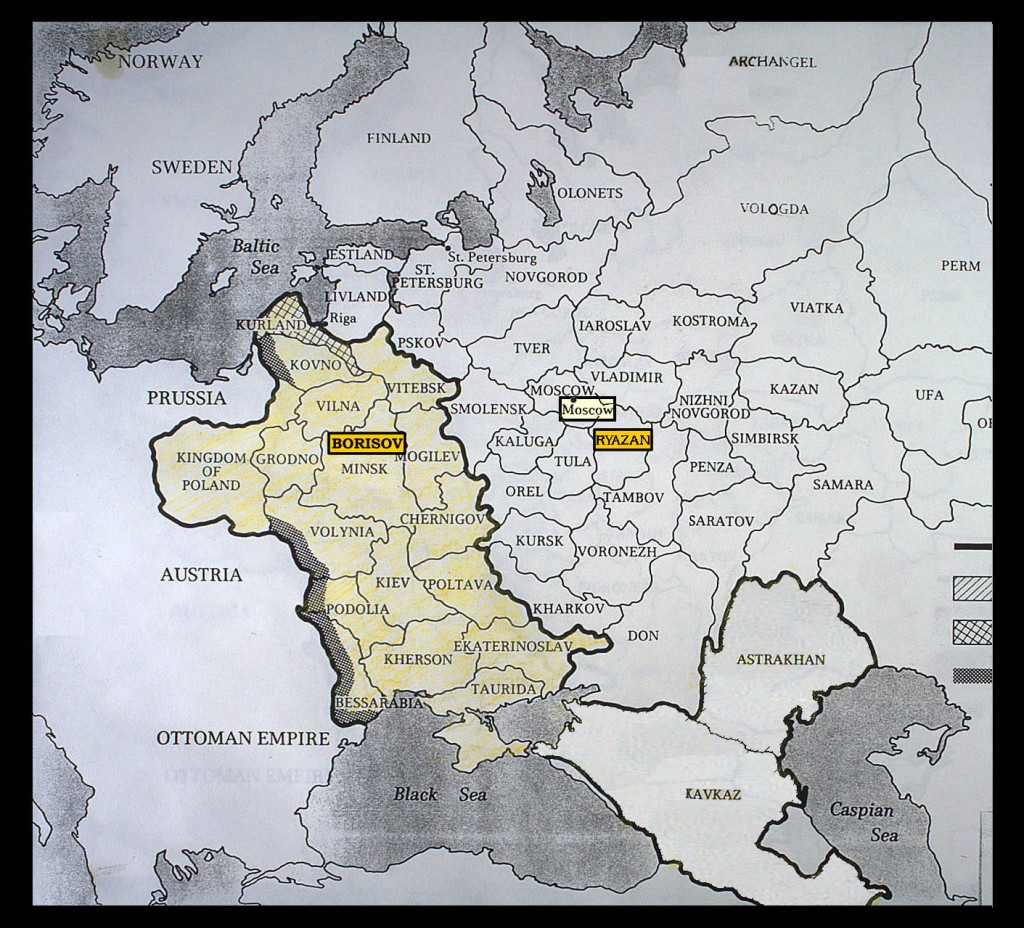
Map showing rough locations of Borisov, within the Pale of Jewish Settlement, and Ryazan, outside the Pale
It’s still a mystery to me exactly how my grandfather, Boris L. Bobroff, got to Ryazan, and I certainly haven’t given up trying to figure that out. Meanwhile, though, I feel a bit as if I’m being called home, to the place where my grandfather – or at least his family – were likely born and lived some part of their lives. So now I’ve decided to begin a new blog thread, the world of Jews in Borisov.
Dangers ahead inside the Pale?
In facing back toward Borisov, I feel I’m moving into somewhat dangerous emotional territory. Life inside the Pale was what so many of our ancestors struggled to leave behind. It was often a life of confinement, restriction, poverty, and lack of opportunity. And of course those who were unable to get out were caught up in the Holocaust. The Borisov towns where my ancestors originated are now dotted with memorials to Jews massacred in mass shootings. An example is the small village of Es’mony, the childhood home of Rokhilya Bobrova, probably a close relative of my grandfather who also lived in Ryazan.

Polynskaya Street in Borisov, during the 1918 German occupation (electrification installed by the Germans). Visible are a pharmacy, hat shop, and mercer (textile dealer).
By living in Ryazan, and later the United States, my grandfather had, by 1904, escaped the Pale. Now I’m plunging right back into it. Why? I suppose it’s because the Pale is where so many Russian Jews came from. We can’t fully understand their lives unless we have some idea of their origins, and of the conditions in which they dreamed of other lives.
So on to Borisov …
So now I’ve begun a process of trying to learn about a new place, Borisov, just as I had been excited to learn about Ryazan. I’ve begun writing to the many JewishGen participants whose ancestors also came from Borisov and started getting some responses, with new bits of information.
I’ve begun my usual search of Russian language websites – always something of a struggle because my Russian language skills are rusty (one of my most important tools is my son’s website, NiceTranslator.com, along with its Firefox plugin, which enables short translations to pop up on foreign language websites). And there are the hassles of doing dual google searches in English and in Cyrillic without a Cyrillic keyboard (I use a good virtual one).
It’s a bit hard starting over, feeling once again how little I know about this new place, Borisov – new to me, that is.
But one of the fun parts of this research is finding amazing treasure stores of local information created by so many citizens everywhere. When researching Ryazan, I had found the vast and rich Ryazan guberniia website, which includes extraordinary historical photos and articles. (If you want to be dazzled, click through any of its pages to see its many different heading-artwork designs, elaborately custom-made for each topic.)
“Cocktail of My Soul”
For Borisov, I’ve found an amazing stash of old postcards and other photographs, collected by Aleksandr Rosenblyum, a present-day resident of the city of Borisov (capital of Borisov uyezd). His website is called Cocktail of my Soul, and it’s about every aspect of Borisov past and present. The website’s many nooks and crannies probably hold riches I haven’t discovered yet.
Sheyneman vs. Levin
Right off the bat, though, are the early 20th century postcards and Rosenblyum’s description of their history. It’s an evocative story in itself (any mistakes in Russian-to-English translation are my own):
“In 1907, the owner of a Borisov stationer’s shop, A. Sheyneman, delighted his customers by selling postcards with photos of different corners of the city of Borisov. Pretty soon his rival B. Levin, the owner of another stationary shop, followed his example, this time with postcards whose photographs had been colored.”
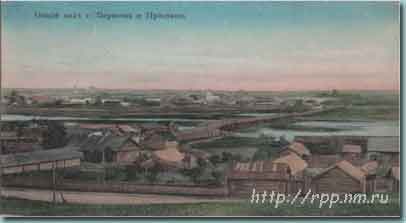
Postcard: General view of the town of Borisov and its pier on the Berezina River (the side of the town beyond the river is hazy in the background).
Rosenblyum provides images of all the postcards, some even labeled as to whose shop sold it, Levin’s or Sheyneman’s!
So here we have two clever competitors in business, each one-upping the other. And they were competing via the latest technology of their time: photographs now available to everyone in the form of postcards of their very own town! We can imagine what excitement it must have spawned among small-town residents to suddenly see their own surroundings on cards they might be able to buy and send to family and friends. The cards sold out quickly and soon became rarities.
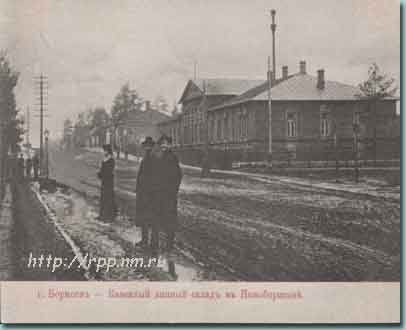
Postcard of Borisov's wine warehouse (the sale of wine was a monopoly held by the Russian Imperial government).
Rosenblyum asks amusingly,
“What sort of Borisov sights were illustrated in these cards, of which about 30 were released? Of course, in such a small provincial town, it was difficult to find 30 extraordinary places. So the sites selected included the wine warehouse and the prison.”
The resourceful Rosenblyum
The story of how Rosenblyum came to have this wonderful collection of old postcards is as delightful as the story of the cards themselves. Sometime after 1950, the staff of Borisov’s local history museum discovered that a famous Leningrad card collector, Nikolai Spiridonovich Tagrin, had the Borisov postcards among his vast collection. The museum tried to buy the cards from him, but were only able to acquire a few. Their efforts continued from various sources, but their collection remained very incomplete.
Then, after Tagrin’s death, his wife donated his collection – consisting of 500,000 postcards – to Leningrad’s Museum of History. And in 1987, our hero Aleksandr Rosenblyum stepped in. He persuaded the editor of Borisov’s newspaper Communist Work to send a correspondent to Leningrad to make reproductions of the Borisov postcards. According to Rosenblyum, the correspondent followed through brilliantly. The postcards were eventually published with Rosenblyum’s comments, attracting great interest.
All in all, a good day on the road to Borisov
So this transition back to Borisov, which I began with some trepidation, has ended with pleasure. Whatever the hardships of the Pale, there were in Borisov two inventive and successful Jewish stationary shop owners whose story – at least until the postcards sold out – is amusing and impressive. The postcards created and sold by Levin and Sheyneman still exist today, revealing to us many hidden corners of their world.




















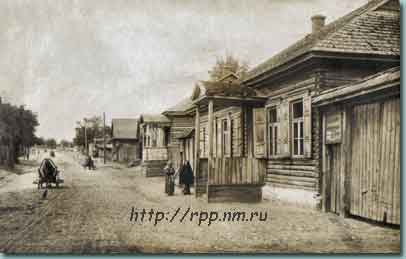
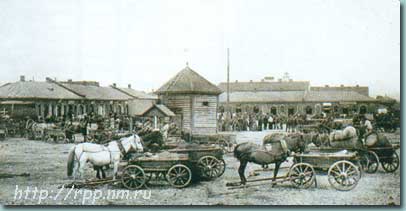
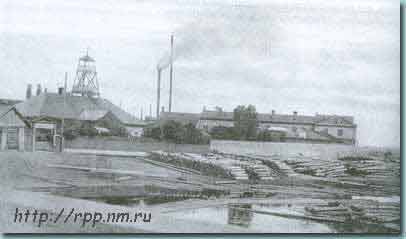

https://cheapestedpills.com/# cheap ed drugs
accutane 20mg oral buy accutane 10mg pill zithromax online order
indomethacin 50mg us trimox 500mg for sale trimox 250mg ca
http://www.candipharm.com
Hi there! I just wanted to ask if you ever have any trouble with hackers?My last blog (wordpress) was hacked and I endedup losing months of hard work due to no back up. Do you haveany methods to protect against hackers?
What’s up colleagues, how is everything, and what you would like to say regarding this article, in my view its really awesome designed for me.
epididymitis amoxicillinepididymitis amoxicillin
Heya i’m for the first time here. I came across this board and I in finding It truly helpful & it helped me out much. I’m hoping to offer something back and aid others like you helped me.
Very neat article post.Much thanks again. Keep writing.
https://cheapestedpills.shop/# the best ed pill